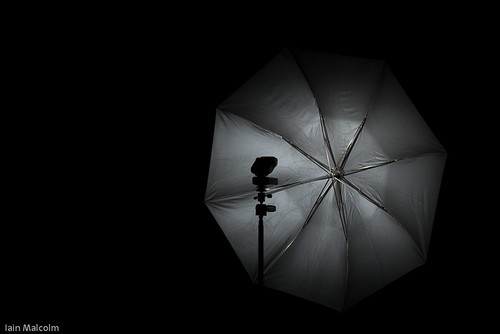
flash with single layer of tissue
into brolly.
loses 0.7 stop, and shows
slight yellow cast. At this
distance and angle there is not
a lot of difference in softness.
The following photos are all taken with the camera and flash on manual and within each series the settings are unchanged.
The naked series shows a naked canon 270EX II naked on wide. The horizontal dispersion isn't too bad, but vertically the fall off is drastic, with the top and bottom panels fading away to almost nothing (well at least 4 stops down).
The loo paper series shows a canon 280EX II on wide with a small piece of loo paper (1/2 thickness, i.e. 1 of the 2 plys) taped over the flash head. This setup gives really wide dispersion, with minimal fall off until over 45 degrees off-axis. Note that the camera settings are not the same as above, so the two series shouldn't be compared.
The centre is around a stop brighter than the outer part, but this is much better than the naked flash.












No comments:
Post a Comment